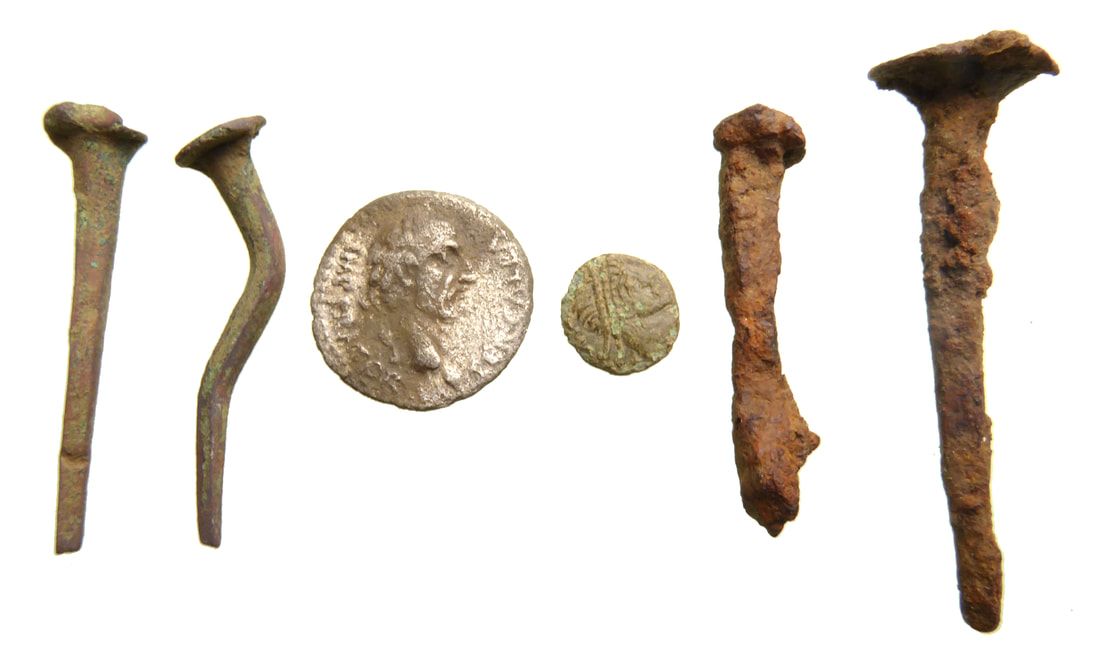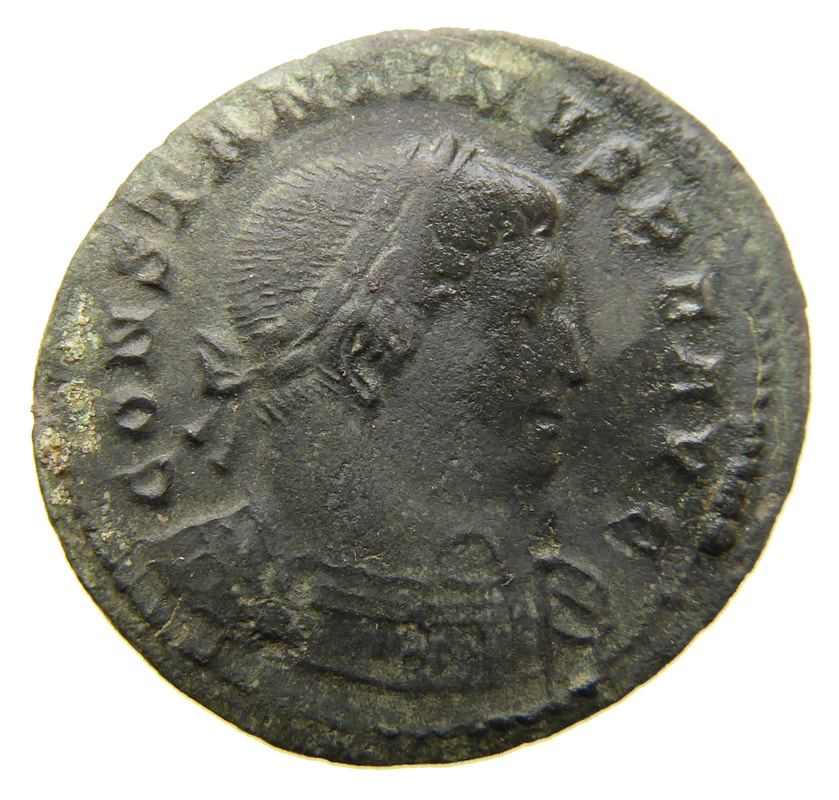The field had been ploughed along one edge of an already established wheat crop. The soil was damp and quite claggy with differing mixes of clay in it's soil profile. It is at least 5 years ago since this was last ploughed and the condition of most of the Roman coins recovered are testament to this area not seeing much plough activity.
Apart from recovering 1.44kg of mainly Roman pottery, we also found 28 Roman coins including two denarii, some of the coins had very nice detail indeed! A Roman fibula and other artefacts, mainly Roman came to light.
There were some nice examples of base sherds including one from a Roman grey ware goblet. A piece of molten slag had bronze and silver within it and another item, a mount, resembles the "Swastika" symbol.
The beginning of the search along the strip highlighted two major areas of ferrous targets with what must have been hundreds of nails. A couple of these beggars are featured below. The Déus just sailed through these with ease, although Déus "Fast" was used in certain sections.
We had a quick look at a nearby field that also had a ploughed and drilled strip along its edge. This produced something we hadn't seen for a long while, a decorated spindle whorl.
Unfortunately, we didn't film any of today's survey due to the conditions (mud everywhere) so hopefully the 70 images from the day will make up for it?
Below is an image showing some of the ferrous nails mixed in with copper alloy nails and two coins for a size comparison. As you can see, the coins are quite small compared to the nails but this didn't present a problem.
The finds, as usual, came from the first 5 inches of the field surface and all detected using the GMP setting as standard except one machine used "Tracking" for GB and one of the coils used was the 13" which actually recovered the smallest coin of the day.
70 High Definition images can be seen here.



 RSS Feed
RSS Feed
